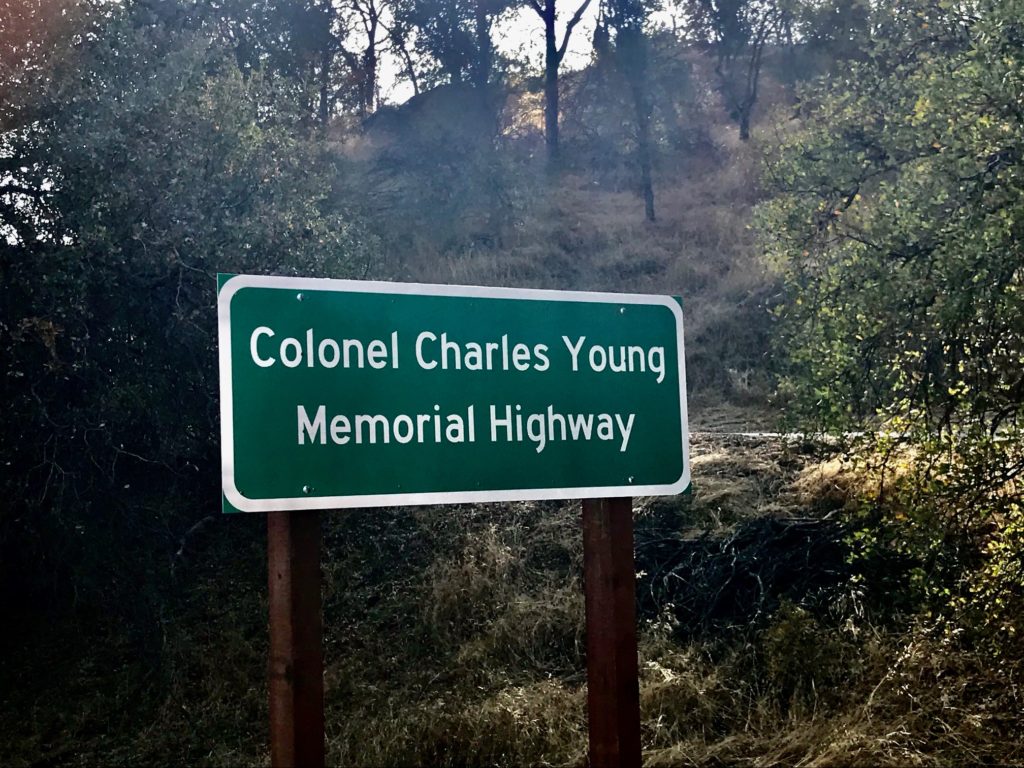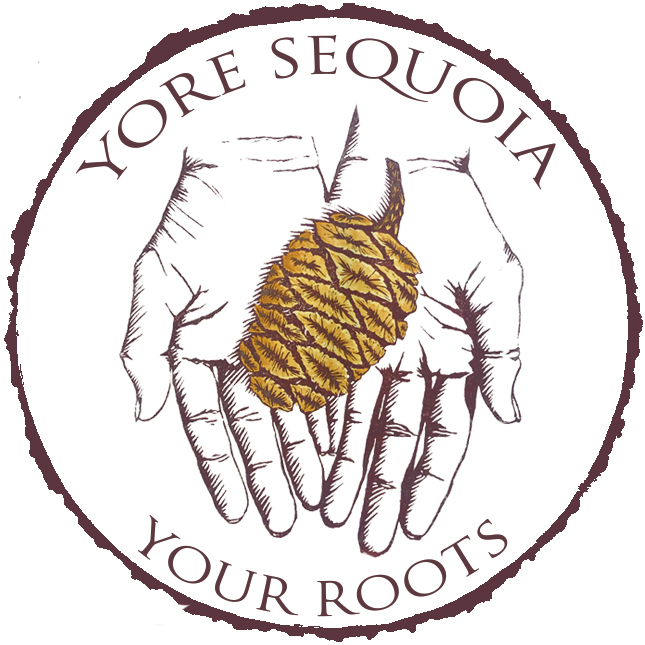As a tribute to Colonel Young (1864-1922) and his enduring legacy, a three-mile stretch of Highway 198 from Salt Creek Road to the Park’s gate was renamed the Colonel Charles Young Memorial Highway.
This is a compilation of stories written by Sarah and John Elliott, 3RNews, in October and November 2019

In August 2018, California lawmakers passed Assembly Concurrent Resolution 142, establishing the Colonel Charles Young Memorial Highway in Three Rivers, near the entrance to Sequoia National Park. The bill was authored by Republican Assemblymembers Devon Mathis and Jim Patterson.
The portion of highway to be designated is the three miles from Salt Creek Road to the Sequoia National Park entrance. The naming of the highway pays tribute to the memory of Colonel Charles Young, a distinguished American who dedicated his life to the service of the United States, including at Sequoia National Park.
Colonel Charles Young
Charles Young was born into slavery on March 12, 1864, in Mays Lick, Kentucky, to Gabriel Young and Arminta Bruen. After his father, Gabriel Young, escaped from slavery and enlisted in the Fifth Regiment of Colored Artillery, his service earned Gabriel and his wife their freedom.
Charles Young attended an all-white high school in Ripley, Kentucky, and graduated at the top of his class. In 1883, Charles Young took an examination for appointment as a cadet at the United States Military Academy at West Point, and was admitted the next year.
Young graduated from West Point in 1889 with a commission as a second lieutenant, the third African American to do so at the time.
In 1903, Young, by then a captain, was appointed acting superintendent of Sequoia and General Grant National Parks, becoming the first black superintendent of a national park. This was pre-National Park Service when national parks were overseen by military officers appointed by the War Department.
Young is responsible for creating the first road into the Giant Forest, finishing what the Kaweah Colony had started from the North Fork to the present-day Crystal Cave Road. In one summer, Young and the Buffalo Soldiers he commanded completed the route.
During his tenure at Sequoia National Park, livestock grazers were evicted and trails were built including a route to Mount Whitney that the National Park Service plans to restore as a national historic trail. Young also took an option on the Marion Griffes ranch in Three Rivers (later the Thorn Ranch on North Fork Drive) but was reassigned so he abandoned his plans to become a local landowner
FOR MORE INFORMATION ABOUT THE LIFE OF CHARLES YOUNG AND HIS TENURE AT SEQUOIA NATIONAL PARK SEE “CHARLES YOUNG: THE ROAD TO SEQUOIA.”
Young was laid to rest at Arlington Cemetery.
Dedication Ceremony
On November 111, 2019, Veterans Day, the Colonel Charles Young Foundation and Sequoia Parks Conservancy hosted host a commemoration of the legacy of Colonel Charles Young and a dedication event in honor of the naming of the Colonel Charles Young Memorial Highway. The event highlighted the history and importance of Colonel Young.
“This is an important celebration for the National Park Service and the State of California,” said Superintendent Woody Smeck. “It recognizes the significant contributions made by the Buffalo Soldiers and then Captain Charles Young to early park protection and administration.”
The dedication ceremony was the culmination of a cooperative effort from key stakeholders all across the country from Ohio (Charles Young Buffalo Soldiers National Monument) to Washington DC (NPS) to Sacramento (Cal Trans and the State Assembly). The driving force was the Charles Young Foundation. The Foundation’s CEO and Charles Young descendant Renotta Young summed up what that simple green highway sign will mean to all who see it. Colonel Charles Young Memorial
“There will be those who pass the sign and say ‘Charles Young… who is that?’ and they will Google him,” Young said. “Then there will be those who say we know who that is and they will be proud.”
Keeping the Charles Young Story Alive
Shelton Johnson, who has devoted his career as an interpretive ranger in Yosemite National Park to telling the story of the Buffalo Soldiers, told the attendees of the dedication ceremony that the world is finally catching up to Charles Young.
“Captain Young I like to call him because I’m a historian and that’s who he was when he came to Sequoia,” Johnson said. “He was not just fighting for his country but simultaneously he was fighting for his people.”
If the National Park Service published a handbook on how to be an interpretive ranger, Shelton Johnson would be on the cover. Ranger Johnson, currently assigned to Yosemite National Park, can be found at his home park recreating his role as a Buffalo Soldier or on the road for speaking engagements, all while inspiring a diverse multitude of people to love America’s national parks.
Shelton has traveled as far away as China with an NPS delegation and Panama to attend an international parks conference, among other far-flung destinations. On Monday, November 11, Johnson was in Sequoia National Park delivering his take on Colonel Charles Young and his role in the early history of Sequoia National Park. Johnson also explained how Young was a seminal figure in a civil rights movement a half-century before there was a Civil Rights Movement.
Johnson calls Colonel Young a voice crying out in the wilderness.
“The Buffalo Soldiers were warriors not just fighting for the U.S. Army but they were fighting for the rights of human beings to be recognized as men,” he said.
If you watched The National Parks: America’s Best Idea (2009), a six-part, 12-hour documentary series by Ken Burns and Dayton Duncan, Ranger Shelton Johnson’s was featured prominently. Now watch as Johnson tells 3R News why there is a Charles Young Memorial Highway in Three Rivers, his love for Sequoia National Park, and what November 11, 2019, means to all Americans and its rightful place in the Civil Rights Movement.
“Most people in this world will be forgotten, but not Charles Young, ” Shelton said.
Neither will Shelton Johnson.
